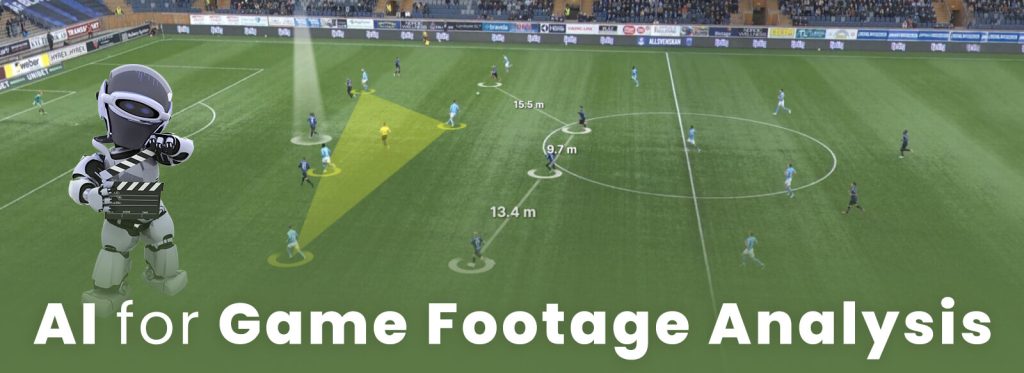Pattern recognition in virtual sports games: analyzing player strategies and performance

The Intricacies of Strategy in Virtual Sports Games
In the competitive realm of virtual sports games, each player’s decision-making process can significantly influence the outcome of a match. As players look to gain the upper hand, they have developed sophisticated strategies that not only enhance their gameplay but also offer deep insights into the evolving nature of esports. Understanding these strategies allows players not only to engage more meaningfully with the game but also to sharpen their competitive instincts.
In Nigeria, where the esports scene is burgeoning, the exploration of player strategies offers a treasure trove of insights. Analyzing the techniques utilized by successful players can reveal patterns that are often overlooked. Three primary factors stand out in this quest for mastery:
- Gameplay Techniques: Experienced players employ a variety of advanced techniques, such as tactical formations and adaptive playstyles. For instance, a patch in popular games may introduce new mechanics, pushing players to adjust their strategies accordingly. Knowing when to switch formations or adopt a defensive stance can often be the difference between winning and losing.
- Behavioral Trends: Observing common strategies during matches can yield fascinating conclusions. For instance, players may frequently revert to aggressive tactics early in the game, especially in high-stakes situations. This tendency may cause them to overlook defensive maneuvers that could provide a safer path to victory.
- Performance Metrics: The importance of statistical data cannot be overstated. Understanding metrics such as accuracy, response time, and win/loss ratios can directly pinpoint areas for improvement. In Nigeria, tech-savvy gamers might utilize software tools that track these statistics in real-time, providing invaluable feedback on their gameplay.
By closely examining these elements, players can identify and replicate successful patterns, which not only enhance individual gaming performance but also contribute to the creation of effective coaching frameworks. With the rise of esports academies and online training sessions in countries like Nigeria, such insights can help trainers devise tailored coaching programs that cater to the unique strengths and weaknesses of their students.
As the esports community continues to flourish in Nigeria, the role of advanced analytical tools becomes paramount. Players who master the art of pattern recognition stand to gain a tremendous advantage, leading to improved understanding, greater satisfaction, and ultimately, higher levels of achievement in virtual sports games. Investing time in studying gameplay trends today can thus pave the way for a more strategic and prosperous gaming future.
RECOMMENDED: Check out this similar article

Decoding the Game: Key Strategies in Virtual Sports
To truly grasp the dynamics of pattern recognition in virtual sports games, it is essential to dive deep into the strategies that players employ on both tactical and psychological levels. Gamers in Nigeria, driven by a burgeoning interest in esports, are keenly analyzing their competition. By understanding common patterns, they not only enhance their skills but also gain a strategic edge essential for success.
One of the most fascinating aspects of gameplay is the interplay between advanced tactics and real-time analysis. Players leverage a variety of skill sets which include:
- Predictive Movements: Successful players often have an uncanny ability to predict opponents’ actions. By observing movement patterns, they can anticipate attacks and alter their strategies accordingly. This skill can be crucial in fast-paced games like FIFA or NBA 2K, where split-second decisions can swing momentum in a match.
- Adaptive Strategy: In the ever-evolving landscape of esports, adaptability is key. The introduction of new patches or updates can render existing strategies obsolete. Astute players stay ahead of the curve by experimenting with diverse approaches, allowing them to quickly find what works effectively in new game environments.
- Data-Driven Decisions: Performance metrics provide crucial insights into gameplay quality. Players often analyze their past matches through advanced analytics, allowing them to discover trends that might escape casual observation. Such metrics include shot accuracy, time of ball possession, and player stamina, which can help in formulating winning strategies.
Moreover, the rise of online platforms for esports has allowed for increased interaction among players, enabling the sharing of strategies and experiences. In Nigeria, where the esports community is rapidly expanding, players often partake in forums and workshops, exchanging their insights on successful strategies. This collaborative spirit not only strengthens individual skill sets but also fosters a sense of community focused on collective growth.
As we analyze player behaviors, it becomes evident that emotional intelligence plays a role in virtual sports as well. Top players manage stress and maintain focus during crucial moments, allowing them to execute game plans effectively. Emotional patterns, such as the tendency to be overly aggressive under pressure, can be detrimental. By recognizing these tendencies, players can train to regulate their emotions, ensuring they stay calm and collected when stakes are high.
Ultimately, the ability to recognize patterns in both gameplay and personal conduct can lead to marked improvement in overall performance in virtual sports games. For aspiring players in Nigeria, the pursuit of mastery isn’t merely about honing skills; it’s about understanding the intricate dance of strategy, psychology, and data analysis that defines the world of esports today. As the community continues to evolve, those who can decode these patterns will find themselves ahead of the competition, paving the way for greater success.
| Advantage | Explanation |
|---|---|
| Enhanced Gameplay Experience | By implementing pattern recognition techniques, players can identify their opponents’ strategies, leading to more competitive and thrilling matches. |
| Data-Driven Insights | Analyzing player performance data allows for targeted improvement, ensuring players can refine their strategies based on factual game statistics. |
The integration of pattern recognition in virtual sports games not only amplifies the excitement of each match but also supports players in their journey towards mastery. The ability to spot trends and anticipate movements enhances the overall dynamic, creating opportunities for more strategic play. Moreover, with data becoming a cornerstone in today’s gaming environment, players who leverage analytics from their gameplay can focus their training on weaknesses and exploit opponents’ tendencies, making for a smarter competition. Such innovations make this an enticing area for both casual gamers and serious e-sports contenders as they seek to optimize their gaming experiences. As technology continues to evolve, the intersection of strategy, performance, and analytics will reshape the very fabric of virtual sports games.
CHECK OUT: Click here to explore more
Analyzing Player Performance: The Role of Technology
In the world of virtual sports games, technology has become the cornerstone for understanding player strategies and performance through innovative patterns. With rapid advancements in data collection and processing, gamers are harnessing technology to elevate their skills, turning them into formidable opponents in the competitive arena.
A significant development in this realm is the employment of machine learning algorithms and artificial intelligence. These technologies are being utilized not just for game development but also for analyzing player behavior. By processing large datasets containing match statistics and player movements, AI can identify recurring patterns that escape even the most astute player’s eye. For instance, a player in a football simulation may consistently favor a particular dribbling technique under pressure; machine learning models can suss out such tendencies and offer tailored advice for improvement. Understanding these nuances is paramount, especially in a bustling esports scene that is uniquely evolving in Nigeria.
Moreover, technology facilitates real-time analytics that provide immediate feedback during gameplay. This allows players to adjust their tactics on the fly rather than waiting until after a match to evaluate their performance. Tools such as gameplay recording software and detailed statistical dashboards enable players to dissect every action, offering insights into strengths and weaknesses. For example, a player may notice through analysis that their shooting accuracy declines after specific defensive maneuvers, prompting them to focus on refining those skills in practice sessions.
The advent of virtual reality (VR) and augmented reality (AR) in the gaming industry has also begun to reshape how strategies are developed. These immersive technologies offer players unparalleled opportunities for practice and experimentation. In Nigeria, a nation with a growing gaming infrastructure, esports training facilities are beginning to incorporate these advanced technologies to provide tailored training exercises. Players can simulate various gaming scenarios, which can significantly impact their ability to identify patterns not only in their style but also in how competing players respond in simulated environments.
Furthermore, community-driven analytics platforms, such as Twitch and Discord, serve as hubs for collaboration and feedback-sharing among players. These platforms allow individuals to learn from one another’s experiences, share unique strategies, and reveal particular patterns they’ve identified throughout their gameplay. In Nigeria, this camaraderie fosters a rich environment for skill development, where novice players can gain insights from seasoned professionals. Live streaming platforms often include features for immediate interactions, wherein gamers discuss trending tactics and offer advice that can pave the way for understanding complex gameplay mechanics.
As we continue to dissect player performance through the lens of technology, it becomes clear that successful gamers must become adept not only at recognizing patterns but also at leveraging technological advancements to refine their skills. By embracing this analytical approach, players in Nigeria can transform the landscape of virtual sports, leading to imaginative strategies and superior performances that challenge traditional expectations. Ultimately, the confluence of technology and human instinct is setting the stage for a new era in esports, where analytical acumen will dictate the champions of tomorrow.
ADDITIONAL INSIGHTS: Expand your understanding here
Conclusion: The Future of Virtual Sports Through Pattern Recognition
In summary, the exploration of pattern recognition in virtual sports games signifies a significant leap in understanding player strategies and performance. With cutting-edge technological advancements, from artificial intelligence to real-time analytics, players are equipped with the resources to enhance their gameplay. This ability to analyze patterns not only improves individual performance but also elevates the entire competitive scene, particularly within Nigeria’s burgeoning esports landscape.
As players increasingly adopt data-driven insights to refine their tactics, they gain a competitive edge that could lead to groundbreaking achievements in local and international tournaments. The rise of virtual reality and augmented reality further enriches training methodologies, allowing players to practice in realistic simulations that mirror actual challenges faced in gameplay. Moreover, platforms like Twitch and Discord foster a vibrant community where players can exchange strategies, thus promoting collective intelligence in tactical development.
Moving forward, it is crucial for aspiring gamers to embrace the confluence of technology and traditional skills. Leveraging community-driven analytics and technological tools, players can identify their strengths and weaknesses with unprecedented accuracy. As the esports environment continues to evolve, the emphasis on analytical prowess will likely become the defining characteristic of future champions. For players in Nigeria, the time is ripe to harness the power of pattern recognition to not only elevate their own game but also contribute to the rich tapestry of the nation’s gaming culture. Embracing these innovations will undoubtedly shape the next generation of esports, bridging the gap between technology and athleticism.


